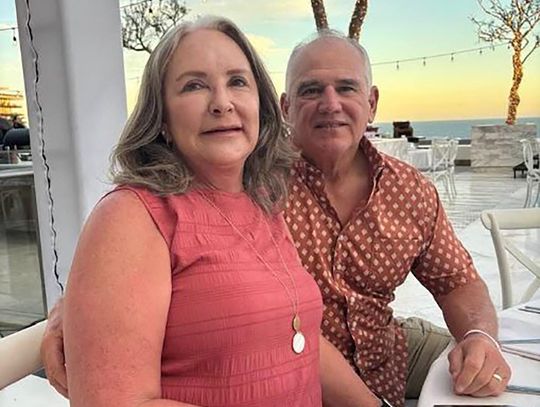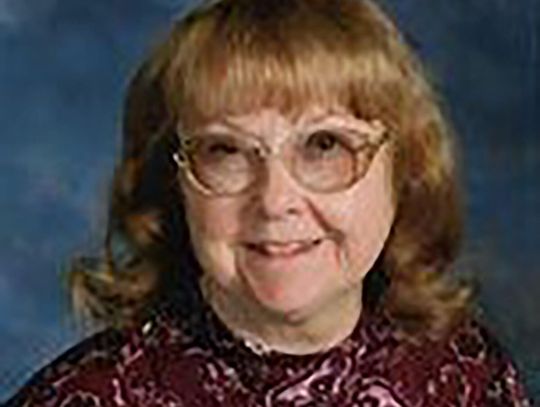I’d had enough of pulling a heavy trailer uphill until something or other broke, so I convinced Ann to buy a tent trailer—a little towed unit that, with a bit of manual effort, expanded into a mansion. By our next vacation trip, in August, 1973, we had bought a Chevrolet Bel Air and fitted it for towing.
Even though it pulled only a tiny trailer, the damn vehicle insisted on overheating on the uphill grade leading from L.A. to the Grapevine. I think we ended up driving at a clip embarrassing to a slow walker. Stopping at the first gas station in Bakersfield, I pleaded for help. The mechanic on duty, I think his name was Beelzebub, took a while to diagnose the car’s problem (with my children already querying—every few minutes—“Are we there yet? How soon, Dad”).
“You need a new water pump,” said Beelzebub.
“Fine,” said I, “How soon can we get back on the road?”
“About an hour after you pay. We’re pretty busy.”
“Ok; here’s my credit card.”
“We don’t take credit. Only cash. The repair will cost (he though a moment, calculating parts & labor and my obvious predicament) two hundred dollars.”
“I don’t have that much cash. I’ll write a check.”
He looked at me sternly. “I don’t take checks. You’re liable to stick me with a bad one.”
After much negotiation—ok, flat-out begging—he grudgingly accepted my check, replaced the water pump, and sent us on our way. Later, going up the very next significant upgrade, the Chevrolet overheated again … me, too.
At a service station stop, an expert mechanic told me, “There’s nothing wrong with your water pump. Doubt there ever was. I’ll just replace your fan belt and you can be on your way in a jiffy.” He took my credit card, by the way.
I don’t remember much else about that trip; not its destination or its length. To this day, my recollection is a hazy, gray blob mixed with blood-red vitriol.
~~~~
Not all of our cars were misshapen, moldy lemons. We traded the Chevy in for a new Ford E-350 Club Wagon, a wonderful, trouble-free vehicle. Besides using it for commuting to work and running errands, that vehicle took the whole family on several extensive vacations. We showed our kids the wonders of Yosemite National Park, Sequoia National Park, the Grand Tetons, Yellowstone National Park, and Hearst Castle. They showed their interest by frequently asking, “Are we there, yet?”
Near Hearst Castle, at a small tourist trap called Cambria, I convinced Ann to buy a beautiful purplish jacket she envied. Its price was higher than she liked, but my wife finds it hard to resist when I want to buy her something. Regardless of price, it was a terrific buy. She wears it to this day and strangers frequently comment on how nice it looks.
~~~~
Well, we finally reached that stage in family life where all the children griped at our restrictions and headed elsewhere. The Club Wagon had to go. By now, Ann returned to work (very successfully I should add). All her life, she’d wanted a little red car, so we bought a red Toyota Celica.
For a while, the Celica suited Ann admirably, but we neglected to factor in her aging parents. When we provided them a drive, her father gallantly insisted on riding in the back seat. I don’t think his neck ever straightened out. So much for the Celica.
We then bought another of our favorite cars: an Oldsmobile—large, classy, and powerful. That was fine for my wife, but we commuted separately, since she took on more and more responsible managerial jobs … which meant longer and longer work hours … also travel.
I needed my own car, and had my eye on a baby-blue Honda Accord, a vehicle so popular, I ended up on a year-long waiting list. One day, I called the dealership to ask how my name was progressing on the list. “You really should consider our latest small car, a Honda Civic CRX. It gets fifty miles per gallon.” (I later heard it was powered by a Japanese motorcycle engine). The CRX lived up to its reputation, which accounts for my permanent sneer … from passing up so many gas stations.
Ann and I had tired of camping in a tent and felt we deserved something more luxurious. Consequently, we bought a used Fleetwood Southwind motor home. It met our needs but struggled mightily when going uphill. I’d heard something about the cause being a high gear ratio, and determined that the next motor home I purchased would have a low one.
I also learned the importance of a vehicle’s wheelbase, which I understand to be the distance between its front and rear tires. The shorter the distance, the more overhang is likely at a motor home’s back. “So what!” you exclaim. At Honey Lake in northern California, a gust of wind caught that overhang square … and shoved the Southwind into the next lane—the one where on-coming traffic normally threatened. Fortunately, we met no traffic, eased back into our assigned lane, said a few Hail Mary’s, and parked the motor home at the next available spot.
Being engineers at heart, we opened both back windows, assuring that the next such gust would blow right through the vehicle without disturbing it. That ploy worked, but it had a drawback. Often as not, when the wind was gusting, we’d have to clear dust, maybe sand, from the rear room of the Southwind. Did I mention that our bedding occupied that room? I’m not sure if we ever got used to sleeping on grit.
That Southwind was a good initiation into the perils of owning a motorhome. For example, we learned that taking it to a mechanic—seemed like once a month—cost an average of a thousand dollars. Well, what can you expect from a used vehicle?
We decided the cheaper alternative would be a new motorhome, on credit, of course. By this time, Ann & I were expert at purchasing vehicles, and we ordered one with a low gear ratio, making sure it had a long wheelbase—practically no overhang at all. Further, we visited the factory, National RV, where the beasts were made, and we thoroughly inspected every detail of their construction.
(National RV, I might add, had a fine reputation for building the size motorhome we could afford. Wouldn’t you know it? A couple of years after we bought ours, they fell on hard times and, I believe, are now bankrupt. In any case, parts are hard to find and expensive.)
So we (and the bank) bought a 32-foot National RV Seabreeze LX. I discovered one thing about my fabled low gear ratio: That motorhome could probably climb a damn tree, but when it came to hills … it proved s-l-o-w. Still, it had a powerful engine, and I was confident about passing 18-wheelers as they crawled up Baker Grade, out of Las Vegas.
I floored the accelerator and smiled as we passed a “Conga line” of semis, tightly packed, nose to tail. A few miles up that grade, and without any warning, the Seabreeze’s motor simply quit. As speed fell off and the engine would not restart, I realized we were in serious trouble. I could still steer, but lacked power assist. I could still brake, but lacked brake assist.
Fortunately, the emergency flashers worked, and Ann could stick her arm out the window, signaling a right turn, frantically signaling a right turn. We were in dire peril. If I muscled the motorhome to the right, it would have crunched, no doubt irritated some semitrailer. Alternatively, I could let the vehicle come to rest and roll downhill backwards into Las Vegas. Wouldn’t that have embarrassed National RV!
Happily, an alert truck driver saw our plight and made room for the RV to enter the Conga line momentarily. We continued further right to a small patch of dirt God provided for fools like me, where I braked to a stop, exerting every ounce of push my legs could offer. Once stopped, Ann & I sat there, hardly breathing, looking down into a precipice. It looked back eagerly, probably disappointedly.
After maybe five minutes, I tried to start the engine … and thank the Good Lord! It revved up! Flashers still firing, I signaled a desire to enter the Conga line … and another truck driver killed his momentum, backing off to let me in. Don’t tell me truck drivers are rude road hogs; I could’ve kissed every one of them.
We stayed in line all the way to Baker, California, pretending we were 18-wheelers. A gas station mechanic in Baker said he was mystified why the engine quit when it did, so we gingerly took it back to the factory for diagnosis.
“Oh,” the man there said, “Your engine has an obsolete computer chip. I’ll install a new one in a jiffy.”
My silent thoughts on the matter were unprintable, and remained so after I was handed an outrageous bill. It seems computer chips weren’t covered in our warranty.
Now, Ann recorded every drop of gasoline the Seabreeze swallowed, and there were lots. It drank enough fuel to power a battleship … and float it. She even recorded the brand of gasoline, also the octane number. We experimented on one trip to see what difference the three available octanes made. Mileage was slightly better with premium grades, but her records showed they were not cost effective. It seems my low gear ratio came at a high cost.
With some difficulty, for instance having a welding shop do its thing, we outfitted the CRX for towing, and hauled it with us on almost every subsequent trip. Funny thing—our RV got about the same gas mileage whether we towed or not. Our best theory about that was that the light CRX acted like a kite tail, stabilizing the RV.
Speaking of stabilizing, the Seabreeze’s long wheelbase shrugged off gusty winds as a mere annoyance. The back end of the RV never even wavered. The tow car probably assisted that stability.
One year, Ann & I dragged the CRX behind the Seabreeze to Quartzsite, Arizona which annually held a famous RV rally. The internet claims, and I believe it, that the town’s population swelled from 4,000 to almost a million during the rally.
We finally had to park the RV miles away from Quartzsite attractions—like a mineral show and swap meet, expecting to use the CRX to visit them. Turned out, it was difficult to find a parking spot for the car, too.
In keeping with my proven expertise, I parked the thing in a ditch, ramming its nose so hard into an embankment, we were in danger of leaving the car there as a permanent monument. A couple of brawny, tattooed RV “cowboys” helped us get the car clear.
Maybe so, but the CRX never forgave me, wobbling thereafter until I towed the drunken vehicle into Las Vegas for repairs. Repairs! Hah! One look at the CRX’s twisted frame and we were reliably informed (or so I assume to this day) that repairing it would cost more than a new one. Did I mention that I was at a Saturn dealership?
So, with help from the bank, we replaced the beloved, if now spiteful, CRX with a vehicle I’d yearned for, an All-Wheel Drive top-of-the-line Saturn Vue. Ann & I drove separately to Reno, near our new home, and had a welding shop transform our Vue for tow status, a process I liken to magic.
I should add that although the Vue weighed much more than our little CRX, the RV’s mileage remained unaffected. I suspect our Seabreeze felt it was gouging us enough, paying for fuel, and took pity on us.
We took many trips after that, mostly visiting our children, who were stationed in Dundee, Oregon (twenty miles from Portland); Lone Pine, California; and Las Vegas, Nevada. While Ann & I did a little sightseeing in those locales, our main interest was the kids, and their kids.
Maybe a year ago, returning from Vegas, my shoulder hurt so much Ann had to do most of the driving. The condition never improved. Even driving our Vue was painful, and I asked Ann to chauffer me, worrying that if I drove and an emergency occurred, my shoulder would make me flinch at a deadly time.
Without belaboring the therapy and exercises I tried, a well-respected doctor diagnosed that I had a torn rotator cup. That gave me a good excuse to buy another car. The bank and I decided on Model 3 Tesla.
The Tesla doesn’t drive itself (yet, anyway), but it provided enough driver assistance for me to handle, and thoroughly enjoy. Best car I’ve ever owned (Elon Musk paid me to say that … well, he should have).
Its main drawback is nagging me when on Auto Steer. If I fail to frequently torque the steering wheel a little, the Tesla complains, first with a little chime reminding I should pay attention, then with a more aggressive reminder (blue lighting, mostly), and lastly, as I found to my regret, by ceding control over to me, ready or not. Sensing no torque, I guess the vehicle supposes I had disappeared and someone else, maybe God, better take control.
END OF STORY









Comment
Comments